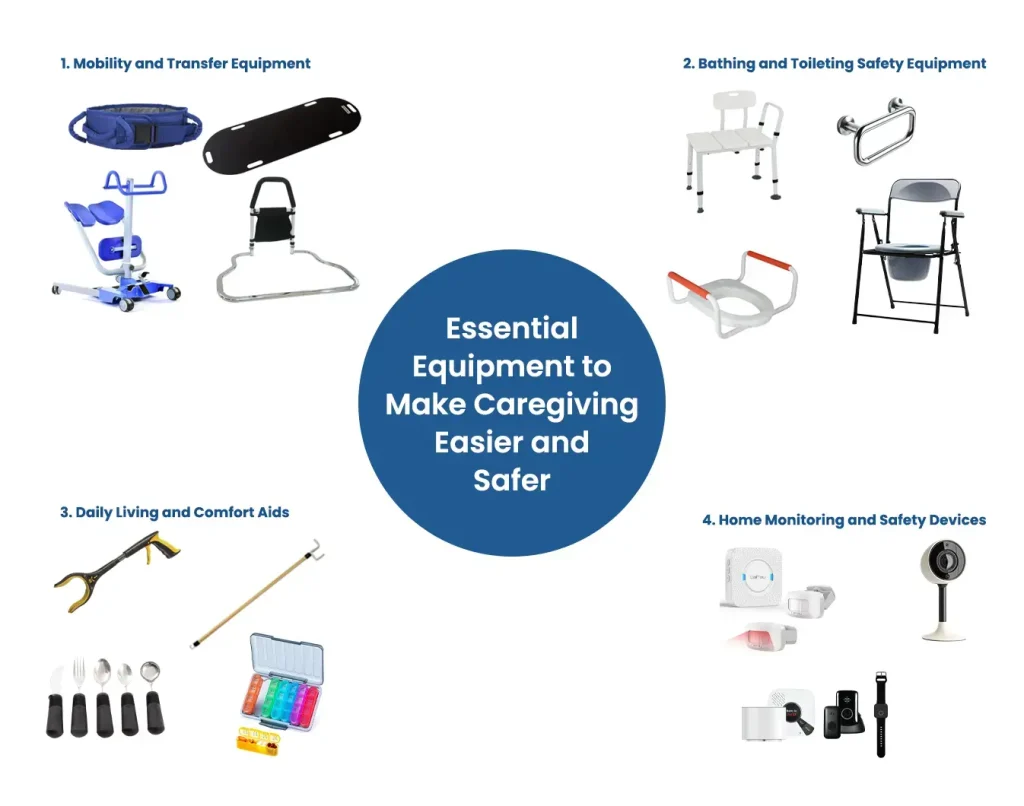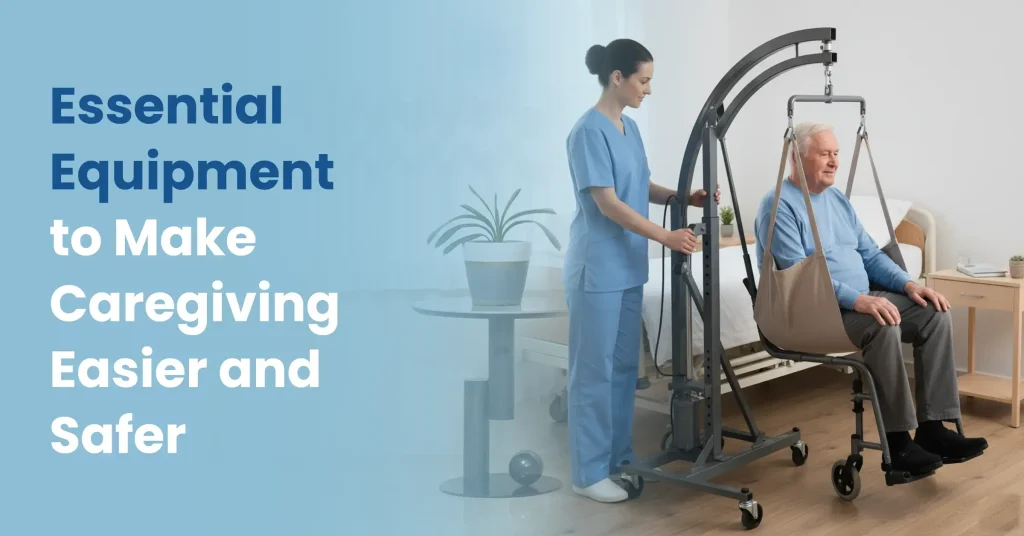Caregiving is a great gesture of kindness. It can be physically and emotionally demanding. The right tools transform this demanding role. They foster safety and independence for your loved one. They also provide crucial relief for you. This guide explores essential equipment for modern caregiving. Our focus is on safety dignity and practical support.
Mobility and Transfer Aids
Safe mobility should be foremost concern. Falls are very risky for older or disabled individuals. Proper equipment work against such risks.
A shower chair is a fundamental safety device. It allows for seated bathing. This prevents slips on wet surfaces. It also conserves the energy of the person receiving care. Transfer benches extend further out from the tub. They enable a safe sideways transfer from outside the bath. This eliminates the need to step over the high tub wall.
For getting in and out of chairs a lift cushion helps immensely. This portable device provides a powered boost. It assists the user in standing up independently. This preserves their dignity. It also protects the caregiver from potential back strain.
Bed rails offer stable support for repositioning in bed. They provide a handhold for someone to pull themselves up. This simple aid promotes a sense of security during the night. For more significant mobility challenges a patient lift is indispensable. These devices use a sling to safely transfer a person. They move them from a bed to a chair or to a commode. This is the ultimate tool for preventing caregiver injury.
Safety and Monitoring Devices
A caregiver cannot always be available. Technology provides an extra set of care. It ensures help is always available.
Video baby monitors are not just for infants. They are excellent for caregiving situations. A camera in the bedroom or living room provides constant visual oversight. You can see if your loved one is restless or needs assistance. This allows you to complete other household tasks without constant worry.
Medical alert systems are critical safety net. These smart devices include a wearable pendant or bracelet. With one tap the user connects to a call center. Trained operators can dispatch emergency help immediately. This provides peace of mind for everyone involved. It empowers the care recipient to call for aid independently.
Bathroom Safety and Personal Care
The bathroom is the highest risk zone. Slippery surfaces create a hazardous environment. Essential equipment here is non-negotiable.
Grab bars are like fundamental of bathroom safety. They must be securely installed on studs in the wall. Place them in a convenient way near the toilet and inside the bathroom. They provide a strong grip for sitting down and standing up. Don’t get confused them with towel racks. Towel racks cannot support body weight and are dangerous.
A raised toilet seat makes a tremendous difference. It reduces the distance one must lower and raise themselves. Many models include built-in armrests for additional leverage. This simple addition can restore a great deal of personal independence.
Non-slip mats are essential for any wet area. Place them inside the shower or tub and on the bathroom floor. They prevent dangerous slips on slick surfaces. For showering a hand-held showerhead offers superior control. It allows for seated bathing. It makes rinsing hair and body much simpler.
Comfort & Accessibility Tools
Reacher Grabbers:
Grab that remote or a shirt from the floor safely. No more risky bending or unsteady stretching.
Weighted Utensils:
They feel solid in your hands. This added weight minimizes shaking for smoother, more comfortable meals.
Button Hooks:
A simple tool that makes buttoning a blouse or shirt effortless. It preserves the joy of wearing favorite clothes.
Promote Self-Reliance:
These tools are about empowerment. They support doing things independently, which boosts confidence.
Maintain Personal Style:
It is not just about function. It is about keeping dignity and choice in daily routines.
A sturdy wheelchair or walker caddy is a simple yet brilliant accessory. It attaches to a mobility aid providing a stable platform. It can hold a cup a book or a telephone. This keeps essential items within easy reach. It prevents the frustration of constantly dropping things.

Creating a Supportive Environment
Your own well-being is just as important as a caregiver. The right equipment can reduce your physical strain. It can also give you mental respite.
A comfortable caregiver bag keeps you organized. Choose one with multiple pockets. It can hold medical documents medication lists and personal items. Being prepared for appointments or outings reduces stress significantly.
Good lighting makes things clear and visible. Soft, bright lights in hallways and on stairs chase away dangerous shadows. For those nighttime trips to the kitchen, motion-sensor lights are a gentle guide. This small change helps prevent stumbles and falls. It makes entire home safer.
Do not underestimate the power of a medical pill organizer. It provides a clear system for managing complex medication schedules. This prevents missed or double doses. It is a small tool that offers enormous peace of mind.
Conclusion: Investing in Wellbeing
Having essential equipment is like having anytime-assistance and safe-living. These equipment are worth living for your patient and loved one’s. It protects the person you are caring for. Also, it protects you from injury and burnout. Cover the most critical areas like bathroom safety and mobility. Then gradually incorporate other tools that enhance comfort and independence. Each piece of equipment is more than just a product. It is a building block for a safer more manageable and more dignified caregiving journey. It empowers your loved one to retain their autonomy. Also, allows you to provide care with strength and compassion for the long term.
FAQ’s: Essential Caregiving Gear
What’s the #1 item to get first?
Bathroom safety. Start with a shower chair and grab bars.
My parent refuses to use anything. Help?
Frame it as tools for independence, not disability.
Are medical alert systems worth it?
Yes. They provide 24/7 emergency help. It makes you worry free.
Where do grab bars go?
Next to the toilet and in the shower. Must be installed in wall studs.
Can smart home gadgets help?
Yes. Smart plugs for lights, voice assistants for reminders.
What are adaptive eating tools?
Weighted utensils to steady hands. Easier grip handles.
What protects my back as a caregiver?
A patient lift. It handles the heavy lifting for you.
Best way to manage pills?
A weekly pill organizer. Prevents missed or double doses.
Help for getting out of a chair?
A lift cushion. It gives a powered boost to stand.
How to make nights safer?
Bed rails for support. Motion-sensor night lights.
What’s a reacher grabber for?
Picks things up off the floor safely. No bending.

